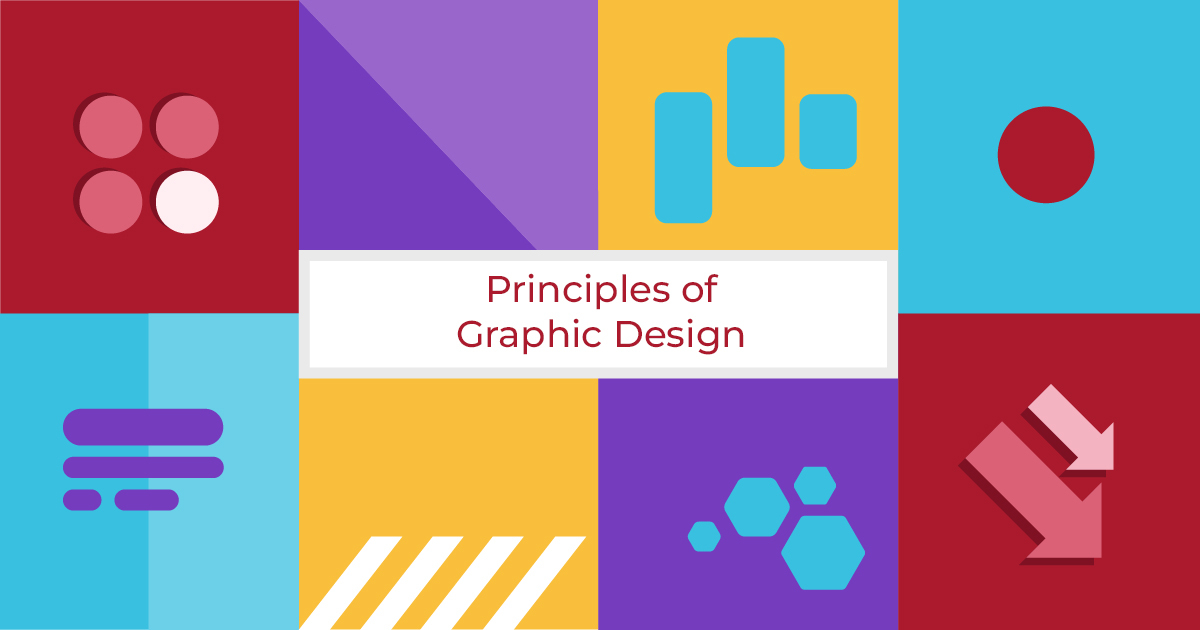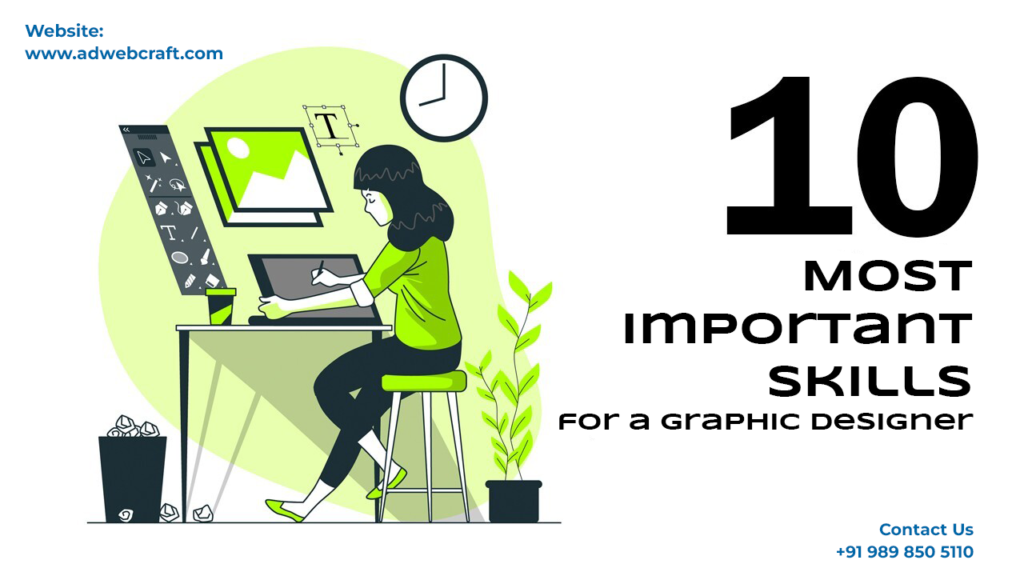Graphic design is a dynamic field that blends creativity with technical expertise. Whether you’re an aspiring designer or an experienced professional, mastering the elements and principles of graphic design is crucial to producing visually compelling work. But technical knowledge alone isn’t enough—you also need a combination of graphic design technical skills and soft skills to thrive in the industry.
In this blog, we’ll explore what top 5 skills a graphic designer needs, along with other essential skills and qualities needed for a graphic designer. Let’s dive in!
1. Mastering the Elements and Principles of Graphic Design
To create impactful designs, you must understand the elements and principles of graphic design. These serve as the foundation of any artwork and help maintain visual harmony.
Elements of Graphic Design
The seven elements of graphic design are the building blocks of any visual composition:
- Line – Defines shapes, forms, and movement.
- Shape – Geometric or organic figures that create structure.
- Color – Evokes emotions and enhances communication.
- Texture – Adds depth and realism.
- Space – Controls balance and layout.
- Typography – Impacts readability and branding.
- Value – Highlights contrasts and mood.
Principles of Graphic Design
The twelve principles of graphic design ensure designs are aesthetically pleasing and effective:
- Balance – Symmetry or asymmetry for stability.
- Contrast – Highlights key elements.
- Emphasis – Draws attention to focal points.
- Alignment – Organizes content neatly.
- Repetition – Reinforces brand identity.
- Proximity – Groups related elements together.
- Hierarchy – Guides the viewer’s eye.
- Movement – Directs flow and navigation.
- Unity – Ensures consistency.
- Proportion – Establishes relationships between elements.
- Variety – Maintains interest.
- White Space – Enhances readability and aesthetics.
Understanding these core principles gives you the foundation needed to create visually stunning designs.
2. Creativity and Innovation
A graphic designer must constantly think outside the box. Creativity isn’t just about making something look good—it’s about finding unique solutions to design challenges. Whether it’s branding, web design, or advertising, your ability to innovate sets you apart.
3. Graphic Design Technical Skills
While creativity is vital, technical proficiency is equally important. Here are some essential graphic design technical skills:
- Adobe Creative Suite – Proficiency in Photoshop, Illustrator, and InDesign.
- UI/UX Design – Understanding user experience for digital products.
- Typography Skills – Mastering typefaces, fonts, and spacing.
- Vector Design – Creating scalable graphics.
- Motion Graphics – Animating visuals for digital media.
- Print Design – Understanding CMYK, DPI, and layout.
Mastering these tools allows you to bring your creative ideas to life effectively.

4. Communication and Collaboration
A successful graphic designer must communicate ideas clearly, whether working with clients, marketing teams, or developers. Understanding client needs and articulating design choices effectively is a key part of the job.
5. Time Management and Organization
Deadlines are a constant in the design industry. Managing multiple projects efficiently while maintaining quality requires excellent time management skills. Using tools like Trello, Asana, or Adobe Work front can help streamline your workflow.
6. Attention to Detail
A small mistake in design can impact a brand’s reputation. Whether it’s color consistency, alignment, or typography, paying attention to the details ensures high-quality work.
7. Adaptability to Trends and Technology
The design industry evolves rapidly. Staying updated with new design trends, software updates, and emerging technologies like AI-powered design tools ensures you remain competitive in the field.
8. Problem-Solving Skills
Graphic design isn’t just about making things look good—it’s about solving problems visually. Whether working on a brand identity or a website layout, you must think critically and find creative solutions.
9. Marketing and Branding Knowledge
A designer must understand branding principles to create visuals that align with a company’s identity. A strong grasp of digital marketing, social media graphics, and conversion-focused design is a valuable asset.
10. A Growth Mindset and Continuous Learning
The best designers never stop learning. Whether through online courses, workshops, or hands-on projects, a commitment to growth keeps your skills sharp.
Frequently Asked Questions
1. What are the elements and principles of graphic design?
A. The elements (line, shape, color, texture, space, typography, and value) are the basic components, while the principles (balance, contrast, emphasis, alignment, repetition, etc.) ensure a cohesive design.
2. What are the 12 principles of graphic design?
A. The 12 principles include balance, contrast, emphasis, alignment, repetition, proximity, hierarchy, movement, unity, proportion, variety, and white space.
3. What are the 7 elements and principles of design?
A. The 7 elements are line, shape, color, texture, space, typography, and value. The 7 principles include balance, contrast, emphasis, movement, pattern, rhythm, and unity.
4. What are the 7 principles of design in graphic design?
A. The 7 main principles are balance, contrast, emphasis, movement, pattern, rhythm, and unity, ensuring effective visual communication.
Conclusion: ADwebcraft’s Final Thoughts
Mastering the elements and principles of graphic design is essential for any designer looking to create visually appealing and functional designs. Alongside graphic design technical skills, soft skills like communication, adaptability, and time management play a crucial role in success.
At adwebcraft, we believe that what top 5 skills a graphic designer needs—creativity, technical expertise, communication, problem-solving, and time management—are the foundation of a thriving career. Keep learning, stay innovative, and never stop refining your elements and principles of graphic design to excel in this competitive industry!


